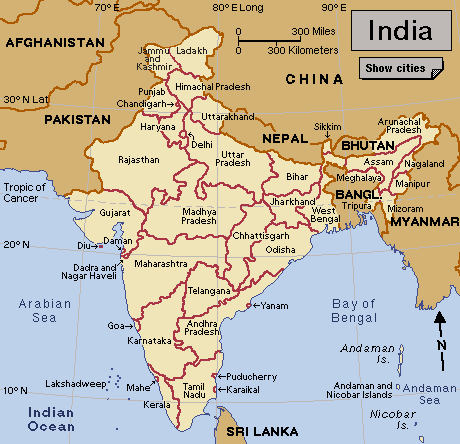Lakshadweep (pop. 64,473) is the smallest union territory of India. It is made up of a group of tiny coral islands, only 10 of which are inhabited. The islands occupy about 12 square miles (32 square kilometers) in the Arabian Sea, off the coast of Kerala, and were formerly known as Laccadive, Minicoy, and Amindivi Islands Territory.

Most of the people rely on agriculture for their living. The women make an elastic fiber called coir from coconut husks. Coir is used in the manufacture of matting. The men build and sail boats, and trade on the mainland. They exchange copra and coir mainly for rice, their principal food.
Most of the islanders descend from various Arab tribes. The main language is Malayalam. Some of the original inhabitants were Muslims. Others were Hindus. Many scholars believe the people of the island of Androth were the first in the area to be converted to Islam. Androth has long been regarded as a Muslim religious center. Preachers traveled from there to the other islands, spreading the teachings of Islam.
Lakshadweep was known to Arab explorers and geographers as long ago as A.D. 45. In the 1500’s, Portuguese traders and settlers from the Indian mainland fought over the islands. In the 1800’s, the islands were administered by the British East India Company. In 1956, the Laccadive, Minicoy, and Amindivi groups of islands became a union territory of India, and in 1973 the territory was renamed Lakshadweep.
